Are you wondering how landscaping impacts the environment? While landscaping as a whole sometimes gets a bad rap for certain practices, the truth is, there are ways to practice eco-friendly landscaping and work with the natural environment as opposed to against it.
It comes down to the practices and the methods that are used.
At Blanchford Landscape Group, we are committed to being stewards of the environment. We are a group of people who got into the Green Industry because we love the natural outdoor environment.
This is not how all companies operate and it does take extra time, commitment, and resources to practice this way. But we want you to know how we’re doing things differently because we care about protecting valuable resources, our local environment, and ultimately the planet.
Here are ways that we strive to be environmentally friendly while performing our Garden Services in Bozeman and Big Sky, MT.
1. We Take Our Cues from Nature
Of the different ways that we aim to practice eco-friendly landscaping, many of them can be traced back to the fact that we take our cues from nature when designing a landscape. While this article is about landscaping practices (not design and installation) it must be said that our process begins with an eco-friendly landscape design.
One of the big things that means is that we’re utilizing appropriate plant material that is going to perform best in your site’s specific microclimate conditions, taking into consideration elevation, sun aspect, soils, wind and what native plants are currently thriving there. That ultimately reduces the need for such heavy maintenance.
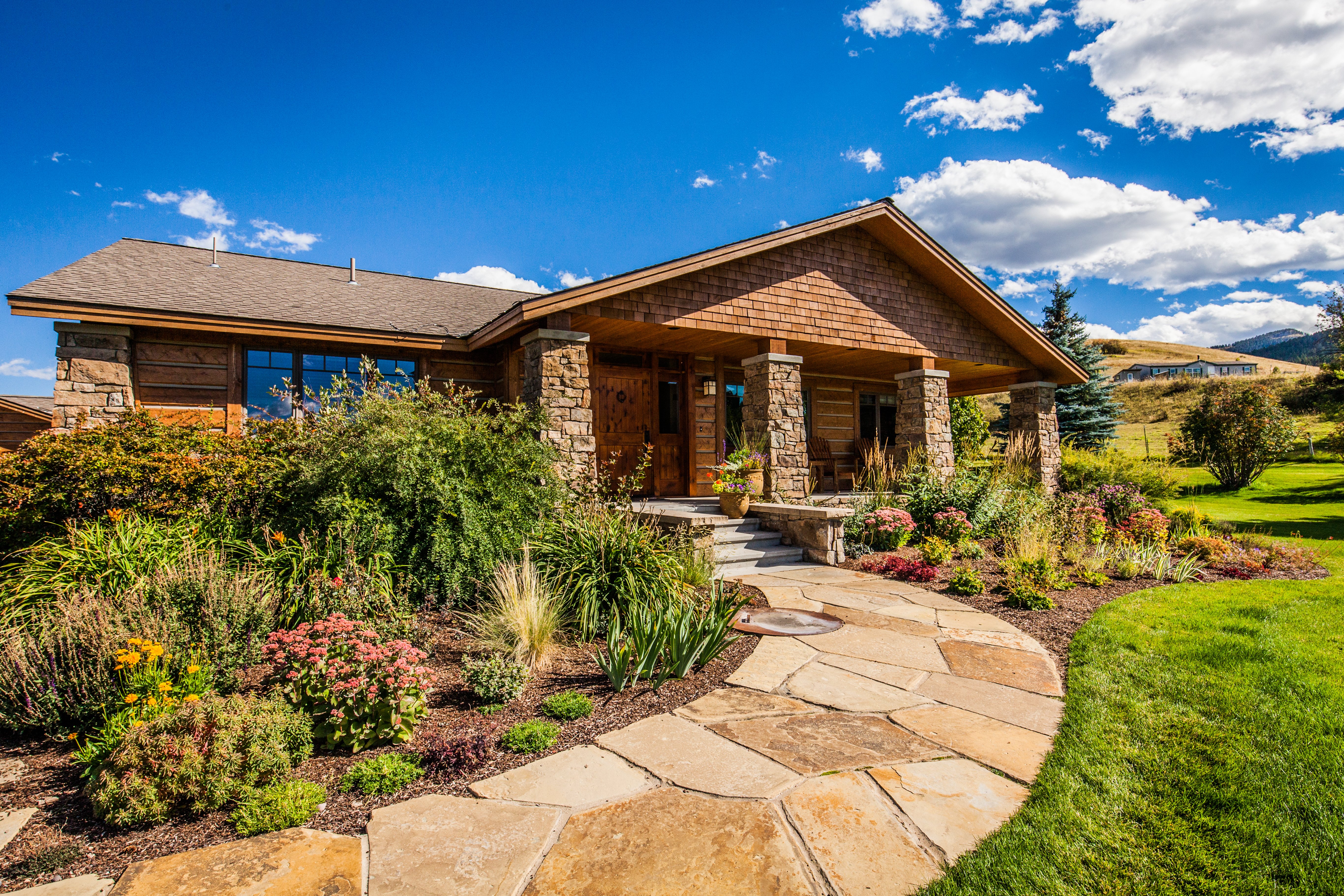
For example, there are many ornamental grasses that make a great choice and only need to be cut back once a year. They naturally perform well in our soil conditions and are drought-tolerant.
Perennials also deliver a tremendous amount of value and can be very low maintenance. They are usually cut back just once a year, unless you want to keep them blooming by deadheading them during the season.
Using native plant material is a critical part of an eco-friendly yard or landscape.
On the flipside, when you install plant material based on looks alone, and you fail to take into account how that plant material will perform in the area that you planted it, you could be setting yourself up for constant maintenance or even replacement. This is problematic as it’s not very eco-friendly to constantly have to water and fertilize a plant in order to keep it alive because it can’t handle the conditions in which it was planted.
This is all important to point out as you may have had a landscape installed with no attention paid to the environment or to future eco-friendly landscaping practices. It could be that replacing some of this plant material with more site appropriate choices is your best move.
2. We Minimize Water Waste
Excessive water usage is one of the big downfalls of eco-friendly landscaping. We’ve already talked about how the installation of native plant material can make a huge difference in water use.
We’re incredibly conscientious about how much water we’re using. We try to minimize wasteful spraying by using drip irrigation systems whenever we can in plant beds. These provide water exactly where it's needed (to the root system) without wasting excessive water by spraying it where it’s not needed.
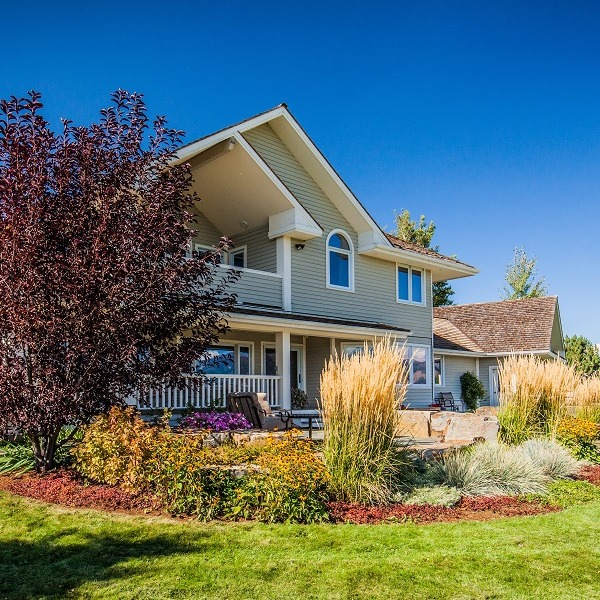
We also utilize smart controllers on our irrigation systems. Smart control technology has come a long way for irrigation and now allows for adjustments made as a result of weather. In the past, you might have seen a lawn or landscape being irrigated during a rainstorm simply because it was programmed to come on at a certain time.
But today’s weather-sensing technology means that the irrigation system will only kick on when it’s needed. The moisture detecting abilities eliminate wasteful watering.
Another important factor in our eco-friendly yard maintenance practices is proactive monitoring. We like to visit our properties every 1-2 weeks and take the time to inspect the plants for signs of stress, pests and over or under watering. We can control small pest and disease issues with pretty benign methods when they are not a full blown infestation. Once it’s affecting the look and health of the plants, it often requires a less eco friendly control method.
3. We Reduce Grass Areas
Turf areas are quite often the biggest water users on a property so we also try to minimize lawns which in turn, reduces maintenance. Of course, a lot of this comes to taking homeowners’ wants and needs into account.
We understand that a lot of homeowners really do like having some grass areas, but these can be sized appropriately for what you intend to use them for and don’t necessarily have to be so large. Instead we can plant native type grass and wildflower meadows which, once established, require very little maintenance or irrigation.
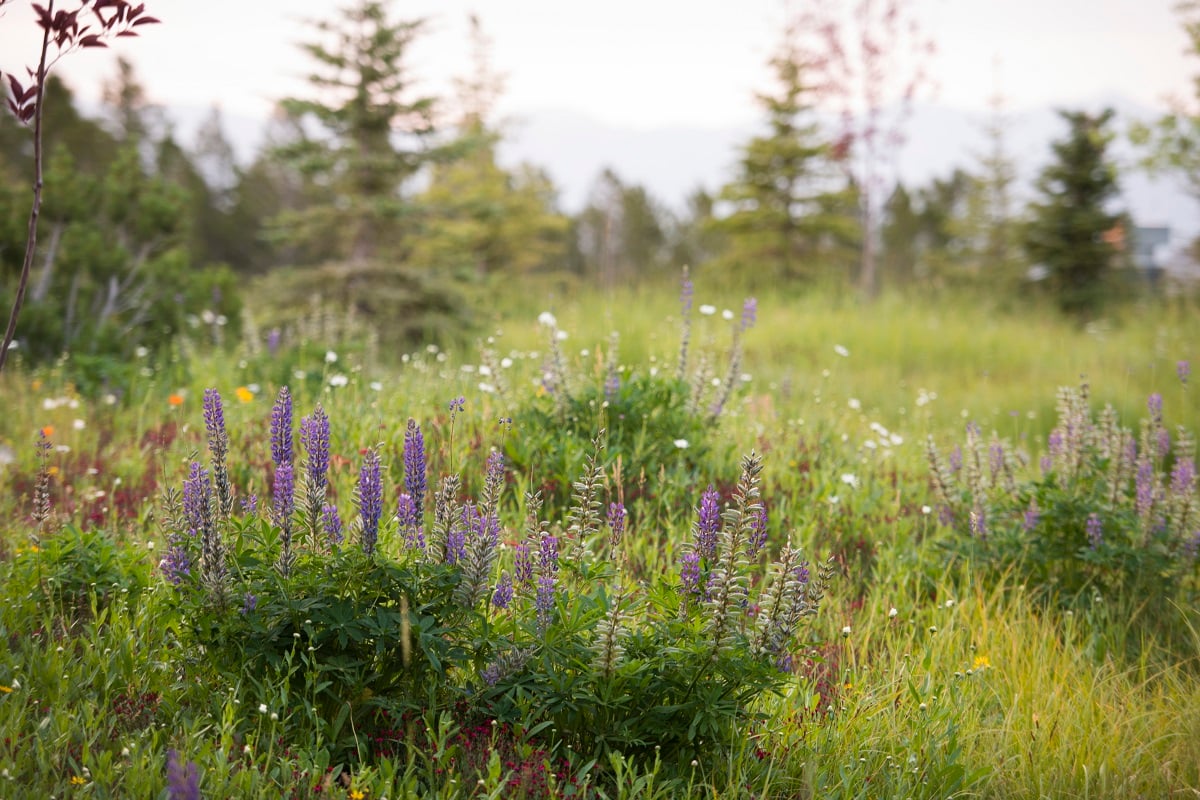
Since many homeowners don’t love the idea of having to mow often, smaller turf areas are generally appreciated.
In addition, we are also selective about installing only drought-tolerant grass types which also reduces maintenance.
4. We Use Rain Water Harvesting Systems
Another way that we can practice eco-friendly landscaping is that we use rain water harvesting systems whenever we can for our watering needs. Many homeowners love the idea of collecting and storing their own water for usage on their property. After all, water is a precious commodity.
Rain harvesting systems are particularly useful and popular amongst our Big Sky, MT clients where we can utilize the snow melt to capture water and use it during periods of drought.
5. We Mulch Landscape Beds in an Eco-Friendly Way
Mulching also helps us to practice eco-friendly landscaping. While a lot of people like using stone for plant beds and it’s true that they require less maintenance (in that there’s no continual replacement needed), stones do not do anything for the plant material that is planted there and are not part of a natural soil building system. They also get contaminated with debris over time and then require frequent weeding.
Mulch, on the other hand, breaks down and provides nutrients to the soil. Although it does require periodic replacement, it’s better for the soil (and more on par with working with nature as opposed to against it).
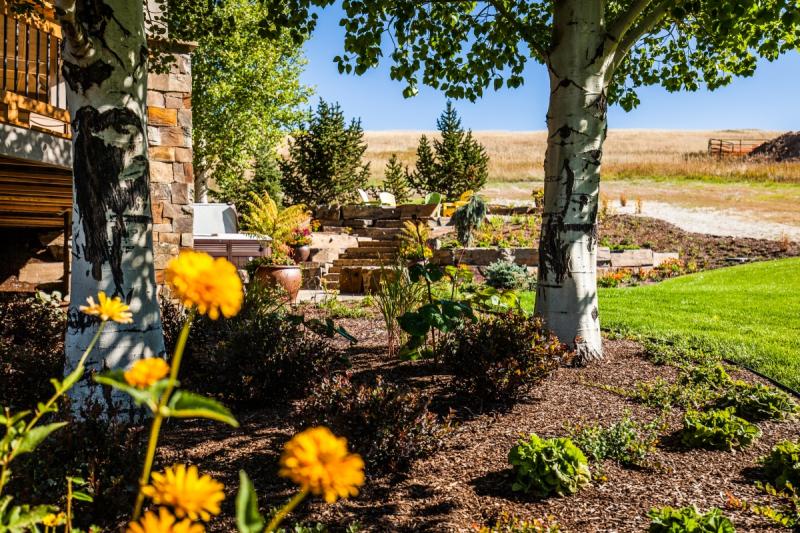
A lot of plant material performs better in mulch as well and this can mean less maintenance needs for those plants over time. Rocks can really heat up and make it more difficult for some plants to thrive. Extremely drought-tolerant grasses are often the only plant material that will perform optimally in rocks.
Of course, the type of mulch that is used matters.
We use soil pep mulch which is a fine bark mulch with compost added. Any organic bark mulch will eventually breakdown and add nutrients to the soil. However, with soil pep mulch, that added soil amendment just assists in the process with more microbial activity and even better results.
6. We Use Special Eco-Friendly Fertilizers
Environmentally friendly fertilization practices can be a hot topic. But there are ways to fertilize in an eco-friendly way. Whereas the fertilizer products that you would pick up in a big box store (or even that many landscape companies use) are manufactured, we use a natural product called Compost Tea.
Compost Tea is water in which compost has been steeped. Leached into that liquid are some of the compost's nutrients, microorganisms, and biostimulants. This helps to feed the plants while also enriching the soil and building a healthy soil ecosystem.
7. We Use Electric Power Equipment
Another big way that we practice eco-friendly landscape maintenance is with the use of electric power equipment. We have electric blowers, mowers, and weed trimmers and use electric-powered equipment for most of our regular maintenance work. . We even have some hybrid vehicles in our fleet!
This is an enormous effort in minimizing our contribution to pollution as gas-powered equipment (and vehicles) can emit a lot of pollutants.
Our clients also like that it reduces noise pollution. The quieter nature of electric powered equipment is a welcomed benefit here in serene Montana.
8. We’re Moving Toward Robotics
One final eco-friendly practice that we want to mention is our movement toward using robotic mowers. While we are still in the early stages of this, we see it as the way of the future.
It’s also eco-friendly.
Because these robots live on the sites of our clients, it drastically reduces the need for site visits, reducing weekly trips to the site with a separate truck and crew
Much like an automatic vacuum, the mowers come out daily, keeping your lawn mowed at just the right height. It’s actually less stressful and more beneficial for the lawn to be mowed regularly than to wait until a drastic cut is needed. That means you’ll also get better results.
Choosing An Eco-Friendly Landscaping Company in Bozeman or Big Sky, MT
It’s important to note that while we take these eco-friendly landscaping practices seriously, not all landscaping companies do. Some companies are going to be more committed to the environment than others and it’s something that you’ll need to research if it’s important to you.
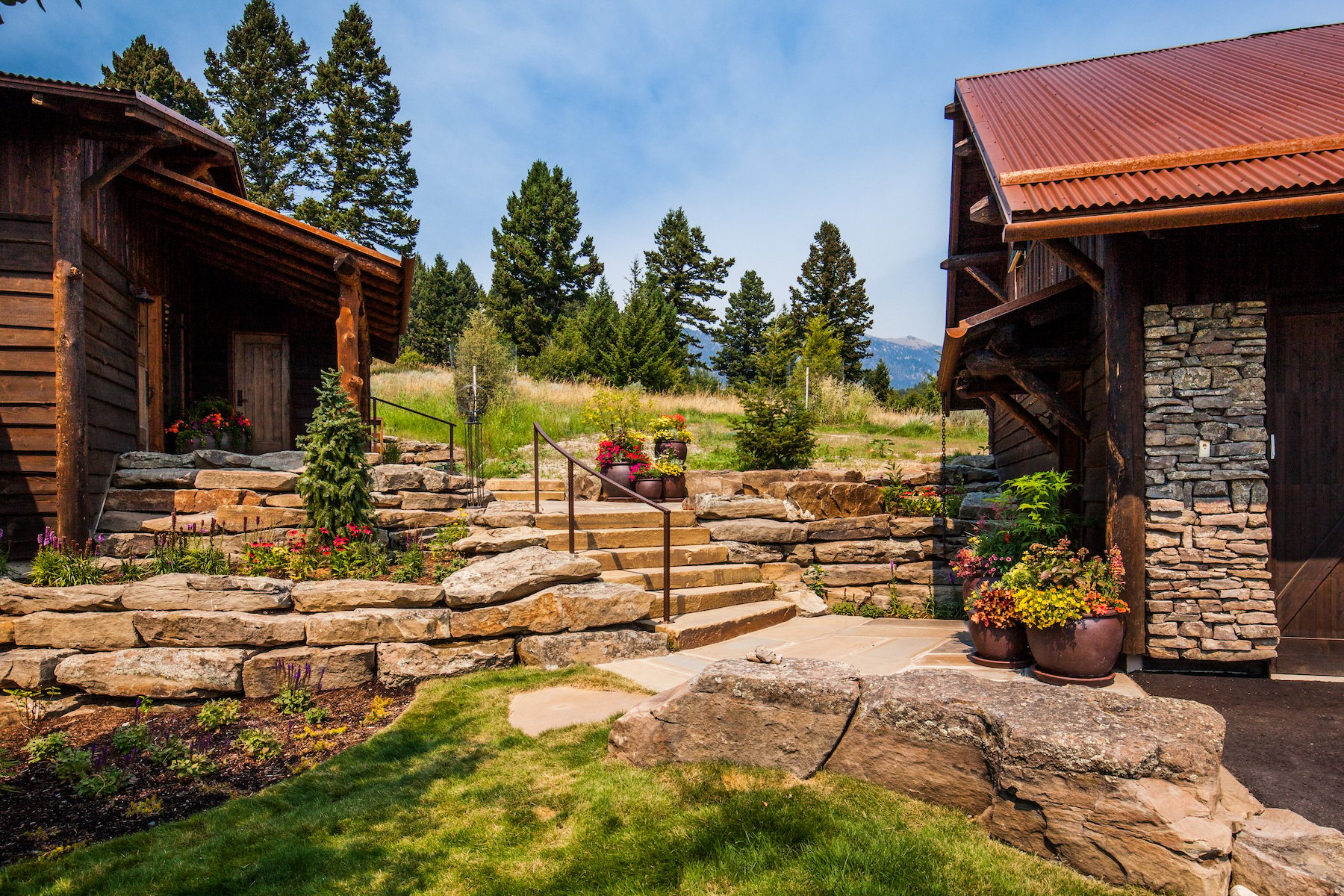
We want to tell you how we feel.
At Blanchford Landscape Group, we take our role in creating green spaces and working with nature seriously and feel great pride in the outcomes. We believe these spaces are not only improving the environment but peoples’ daily lives and that’s a rewarding aspect of what we get to do each day.
We also believe strongly that we can make improvements that benefit the property as a whole without having a negative impact on the world around us. After all, you deserve to be able to have the best of both worlds—to have a landscape that you can be proud of and enjoy to the fullest without feeling as though you’ve had a seriously detrimental impact on the environment because of it.
That’s why you can also count on us to continually evolve.
We’re always looking to make better choices with the equipment and the landscaping materials that we use for maintenance. As we move into the future, we will continue to pay attention to ways that we can be better for you and for the environment.
Are you ready to learn more about garden services (landscape maintenance) at your Bozeman or Big Sky, MT home? Let’s connect and talk about your needs. Then we can meet and review a detailed plan of action. With everything being handled for you, you’ll be able to relax and enjoy your landscape.


